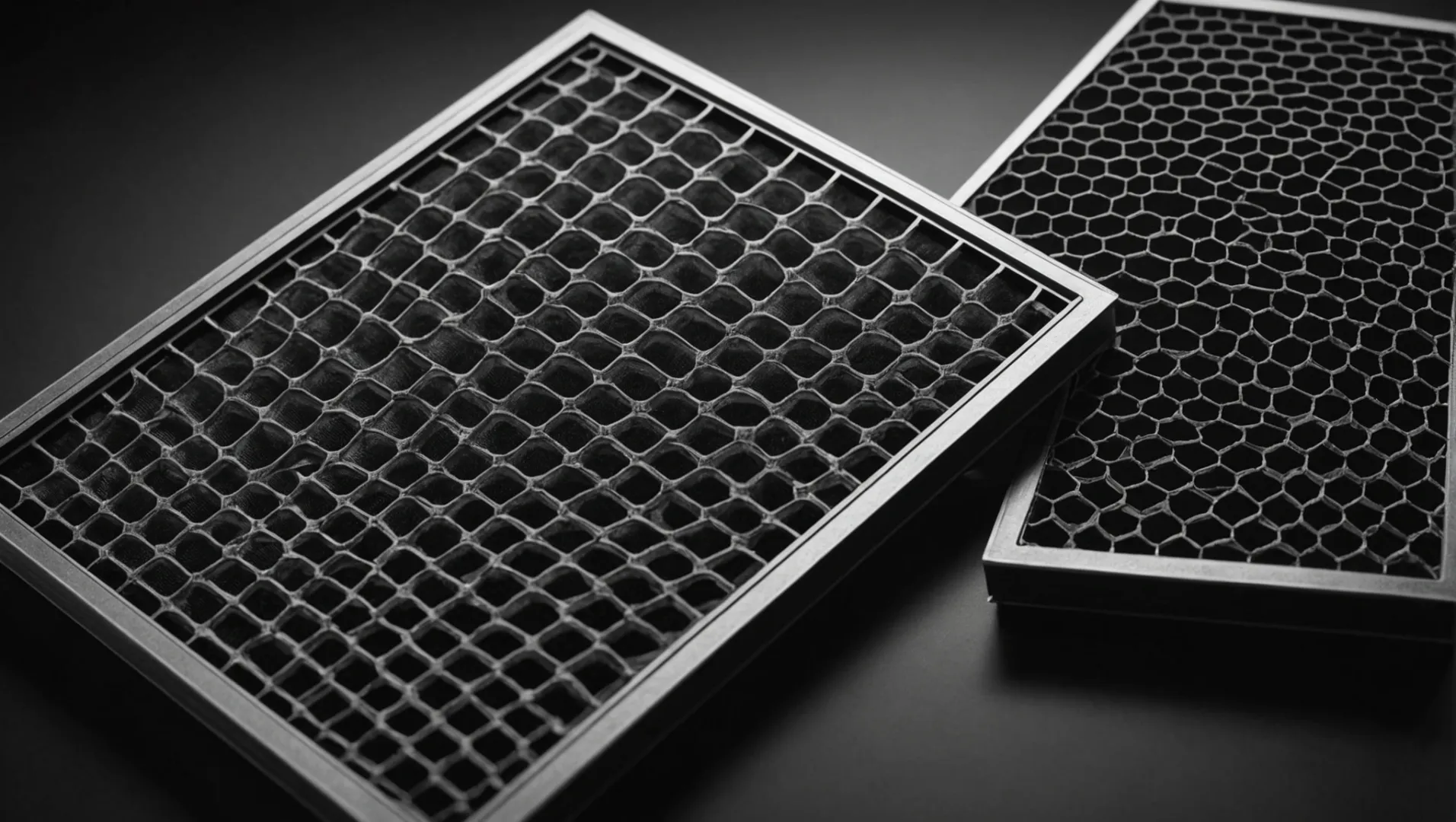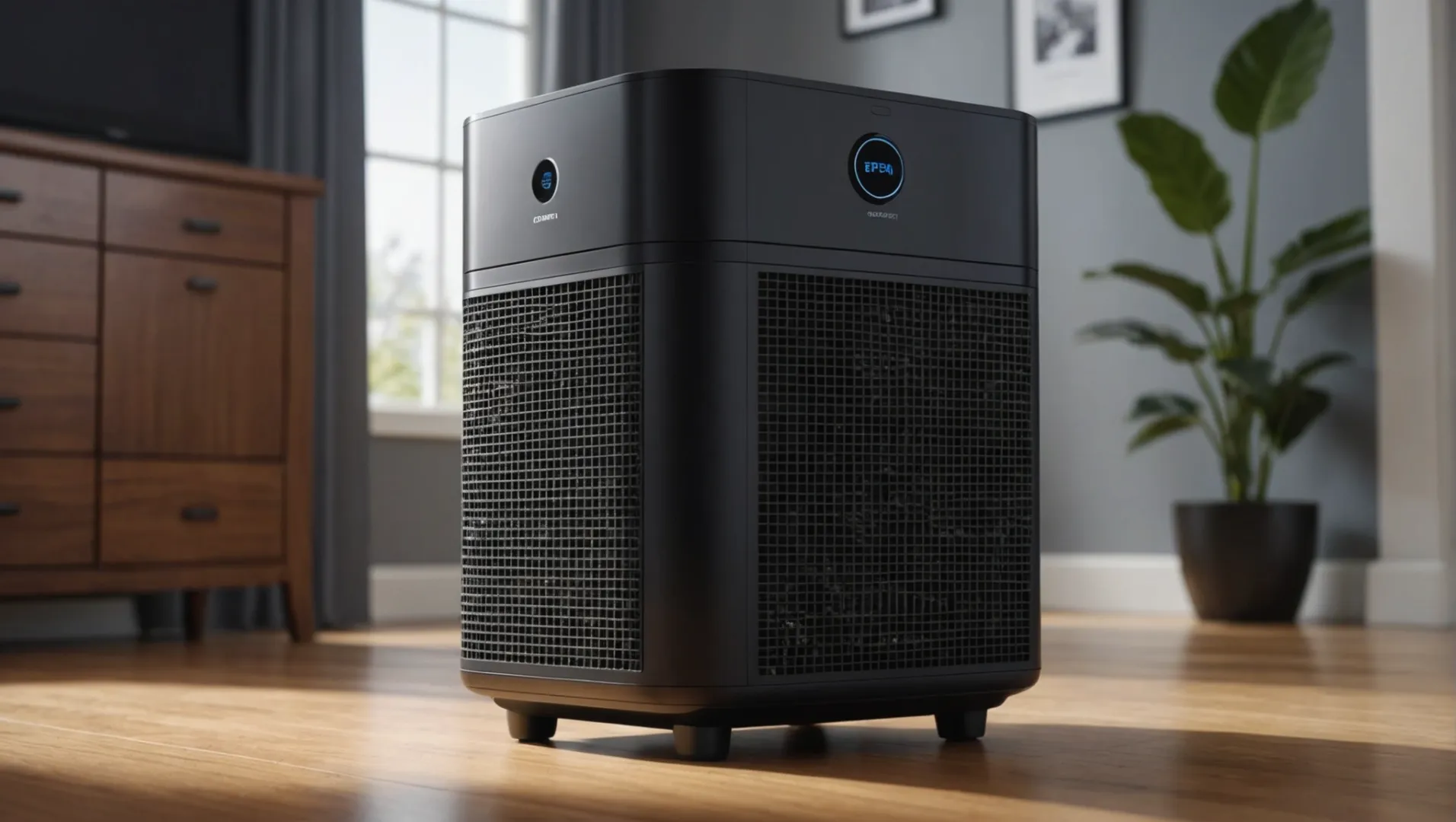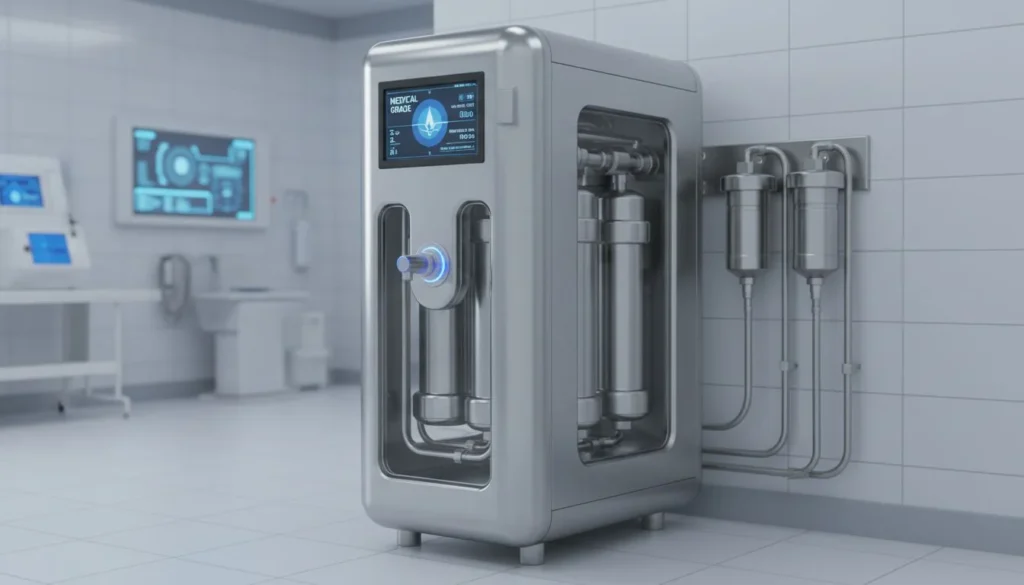
Choosing between HEPA and carbon filters is more than just a technical decision; it’s a step towards healthier living.
HEPA filters are superior for removing airborne particles, while carbon filters excel in eliminating odors and volatile organic compounds (VOCs). For comprehensive air purification, many systems combine both to address a wide range of air quality issues.
Understanding the strengths and limitations of HEPA and carbon filters can help you choose the best option for your air quality needs. Let’s dive deeper into how these filters work and discover which might be more suitable for your specific situation.
HEPA filters remove odors effectively.False
HEPA filters capture particles, not odors. Carbon filters remove odors.
What Are HEPA Filters and How Do They Work?
HEPA filters are key to capturing tiny particles in the air, crucial for cleaner breathing environments.
HEPA filters work by trapping particles as small as 0.3 microns through a dense mat of fibers, effectively improving air quality by removing dust, pollen, and other pollutants.

Understanding HEPA Technology
High-Efficiency Particulate Air (HEPA) filters are designed to capture at least 99.97% of particles as small as 0.3 microns. This level of efficiency is achieved through a combination of three mechanisms: interception, impaction, and diffusion. As air flows through the filter, particles are caught in the dense web of fibers. HEPA filter efficiency1 standards range from HEPA 11 to HEPA 14, with increasing filtration capabilities from 95% to 99.995%.
The Structure of HEPA Filters
HEPA filters consist of a randomly arranged set of fibers, usually made of fiberglass. The filters operate by slowing down particles' movement through their intricate weave, allowing for effective capture. This structure is crucial in preventing airborne particles2 from passing through the filter and entering the environment.
| HEPA Level | Filtration Efficiency |
|---|---|
| HEPA 11 | 95% |
| HEPA 12 | 99.5% |
| HEPA 13 | 99.95% |
| HEPA 14 | 99.995% |
Benefits and Limitations
The primary benefit of HEPA filters is their ability to significantly reduce airborne allergens, making them ideal for individuals with respiratory issues or allergies. However, they do not remove odors or gases, which is why many air purifiers pair them with carbon filters.
Despite their effectiveness, HEPA filters can become clogged over time, reducing airflow and efficiency. Regular maintenance and replacement are essential to ensure optimal performance.
Applications and Use Cases
HEPA filters are widely used in a variety of settings, including homes, hospitals, and industrial environments. They are particularly beneficial in spaces that require stringent air quality standards, such as cleanrooms and laboratories.
In conclusion, understanding how HEPA filters function and their role in improving air quality can guide you in selecting the right air purification system for your needs.
HEPA filters capture particles as small as 0.3 microns.True
HEPA filters trap particles as small as 0.3 microns, improving air quality.
HEPA filters remove odors and gases effectively.False
HEPA filters don't remove odors or gases; they need carbon filters.
How Effective Are Carbon Filters at Removing Odors?
Can carbon filters really eliminate odors effectively, or are there better options?
Carbon filters are highly effective in removing odors and volatile organic compounds (VOCs) by adsorbing them onto their surface. This process neutralizes unpleasant smells from pets, cooking, and smoke, making carbon filters a popular choice in air purification systems.

Understanding Carbon Filters
Carbon filters, often referred to as activated carbon filters, function by utilizing a large surface area of porous carbon to capture and neutralize odors and VOCs. This adsorption process is key to their effectiveness, as odorous molecules adhere to the carbon's surface.
Types of Carbon Filters
- Corrugated Activated Carbon: Offers a large surface area for adsorption, ideal for heavy odor environments.
- Honeycomb Carbon: Features a structured design that maximizes airflow while maintaining high adsorption capacity.
Each type has its benefits, with corrugated activated carbon3 providing extensive coverage for severe odor issues and honeycomb carbon4 balancing efficiency with airflow.
Factors Affecting Effectiveness
- Airflow Rate: The efficiency of a carbon filter depends heavily on the air purifier's airflow rate. High airflow ensures more frequent exposure of air to the filter.
- Filter Thickness: Thicker carbon layers can adsorb more particles, but may reduce airflow, affecting the Clean Air Delivery Rate (CADR).
- Technology Integration: Some air purifiers use advanced integration techniques to enhance the performance of carbon filters by combining them with other filtration systems.
Comparing Carbon Filters with HEPA Filters
While HEPA filters excel in removing particulate matter such as dust and pollen, carbon filters are unmatched in odor removal. This complementary function is why many air purifiers integrate both technologies to cover a broader spectrum of air quality concerns.
Use Cases for Carbon Filters
- Pet Owners: Carbon filters effectively neutralize pet odors, providing a fresher indoor environment.
- Kitchens: Useful in eliminating strong cooking smells that tend to linger.
- Smokers: Helps reduce tobacco smoke odors, improving overall air quality.
By understanding the strengths of different carbon technologies5 and their specific applications, you can select an air purifier system that meets your unique needs.
Carbon filters are more effective than HEPA filters for odor removal.True
Carbon filters adsorb odors, unlike HEPA filters which capture particles.
Thicker carbon layers always improve airflow in air purifiers.False
Thicker layers may reduce airflow, impacting Clean Air Delivery Rate.
Why Do Air Purifiers Combine HEPA and Carbon Filters?
Combining HEPA and carbon filters maximizes air purification by targeting particles, odors, and gases.
Air purifiers combine HEPA and carbon filters to tackle both airborne particles and gaseous pollutants effectively. This dual-filter system ensures a more comprehensive approach to improving indoor air quality by addressing both particulate matter and odors.

Understanding HEPA and Carbon Filter Functions
To appreciate why air purifiers combine HEPA6 and carbon filters, it's important to understand their individual roles. HEPA filters excel at trapping particles such as dust, pollen, and pet dander. They are essential for those seeking to reduce allergens and improve air quality significantly. On the other hand, carbon filters are proficient in removing odors and volatile organic compounds (VOCs), which are not captured by HEPA filters.
Benefits of Combining Filters
The integration of both filter types in an air purifier caters to a broader spectrum of pollutants. For instance, while a HEPA filter will capture fine particles like smoke and bacteria, a carbon filter will neutralize the smell of smoke and absorb harmful gases released from cleaning agents or paint.
| Filter Type | Key Functionality | Ideal For |
|---|---|---|
| HEPA | Removes particles, allergens | Allergies, asthma sufferers |
| Carbon | Eliminates odors, VOCs, gases | Homes with pets, cooking smells |
Efficiency and Performance Considerations
Using both filters requires balancing efficiency with performance. For example, different grades of HEPA filters—ranging from HEPA 11 to HEPA 14—offer varying levels of filtration efficiency, with HEPA 14 filtering up to 99.997% of particles. Meanwhile, the type of carbon filter, whether corrugated or honeycomb activated carbon, affects its ability to remove odors effectively.
Moreover, heavier carbon filters can increase resistance within the air purifier system, potentially reducing the Clean Air Delivery Rate (CADR). It's crucial for manufacturers to strike a balance between filtration effectiveness and maintaining a high CADR for optimal air purification performance.
Practical Applications
For consumers, choosing an air purifier that combines both HEPA and carbon filters means gaining comprehensive protection against a range of air quality issues. Whether you are concerned about pollen in spring or cooking smells in your kitchen, this dual-filter system can provide a versatile solution.
By understanding the strengths of each filter type, you can make an informed decision when selecting an air purifier that best suits your home environment.
HEPA filters remove odors effectively.False
HEPA filters capture particles, not odors; carbon filters handle odors.
Carbon filters capture volatile organic compounds.True
Carbon filters absorb VOCs, unlike HEPA filters which capture particles.
Which Filter Type Is Best for Allergens and Asthma?
Navigating the world of air filters is essential for asthma sufferers and allergy-prone individuals.
HEPA filters are typically the best choice for managing allergens and asthma triggers due to their high efficiency in trapping fine particles like dust, pollen, and pet dander. For optimal results, choose a filter with a higher HEPA rating, such as HEPA 13 or 14, which can capture up to 99.97% of airborne particles.

Understanding HEPA Filters for Allergens
High Efficiency Particulate Air (HEPA) filters are specifically designed to capture at least 99.97% of particles as small as 0.3 microns. This makes them highly effective for people with allergies and asthma, as they can trap common triggers such as dust mites, pollen, and pet dander. HEPA filters7 are classified by their efficiency, with HEPA 13 and 14 being the most effective in residential settings.
HEPA filters work by forcing air through a fine mesh that captures harmful particles. Their effectiveness can vary depending on the specific filter's rating, airflow capacity, and maintenance frequency. It's vital to replace HEPA filters regularly to maintain their efficiency and ensure they continue to provide clean air.
The Role of Carbon Filters in Asthma Management
While carbon filters8 primarily target gases, odors, and volatile organic compounds (VOCs), they play a supportive role in managing asthma by removing potential irritants from the air. Carbon filters use activated carbon to adsorb molecules, which can help reduce exposure to certain asthma triggers such as tobacco smoke or cooking odors.
However, it's important to note that carbon filters do not capture particulate matter, which is often more critical for asthma management. Therefore, while useful, they should not be relied upon as the primary solution for allergen removal.
Combining Filters for Comprehensive Protection
Many modern air purifiers integrate both HEPA and carbon filters to offer comprehensive air cleaning solutions. This combination allows users to benefit from the particle-trapping capabilities of HEPA filters while also addressing odors and gaseous pollutants with carbon filters.
The integration of these two technologies can create an optimal environment for those suffering from asthma or allergies, ensuring both particulate and gaseous irritants are effectively managed. When choosing an air purifier, consider models that feature multi-stage filtration systems to ensure the broadest protection possible.
When selecting a filter system, evaluate factors such as the Clean Air Delivery Rate (CADR), noise levels, and filter replacement costs to make an informed decision. Investing in a high-quality air purifier with both HEPA and carbon filters can significantly enhance indoor air quality and alleviate symptoms for allergy and asthma sufferers.
HEPA 13 filters capture 99.97% of particles.True
HEPA 13 filters are highly efficient, capturing particles as small as 0.3 microns.
Carbon filters effectively capture dust mites.False
Carbon filters target gases and odors, not particulate matter like dust mites.
Conclusion
For optimal air quality, consider a purifier with both HEPA and carbon filters. They work together, addressing both particles and odors, leading to a healthier home.
-
Learn about the different HEPA standards and their efficiency levels.: According to European standards, there are 17 classes of filters ‑ the higher the class, the greater the efficiency. Classes E10 to E12 are Efficient ... ↩
-
Discover how HEPA filter structure captures and retains particles.: This type of air filter can theoretically remove at least 99.97% of dust, pollen, mold, bacteria, and any airborne particles with a size of 0.3 ... ↩
-
Learn how corrugated activated carbon enhances odor removal efficiency.: Activated carbon, also called activated charcoal, is a form of carbon commonly used to filter contaminants from water and air, among many other uses. ↩
-
Discover how honeycomb design improves air purifier performance.: Honeycomb activated carbon is a new type of eco-friendly activated carbon waste gas purification product, which can effectively reduce odor and pollutants. ↩
-
Explore various carbon filter technologies for optimal odor control.: Air Purifier technology that utilizes charcoal or carbon filters to absorb and contain odors, VOCs and smoke from the air. ↩
-
Learn about HEPA filters' particle-capturing capabilities.: HEPA filters are pleated mechanical air filters that have a considerable thickness in order to capture the particulates. The pleats create a mat ... ↩
-
Explore how HEPA filters capture allergens effectively.: Using a HEPA vacuum will trap some particles, leaving others that are stirred up into the breathing space to be removed by room or whole house air filtration. ↩
-
Understand how carbon filters remove odors and gases.: Carbon filters trap odors through a process called adsorption, which occurs when molecules attach to the outside of a surface, rather than being soaked into it. ↩







